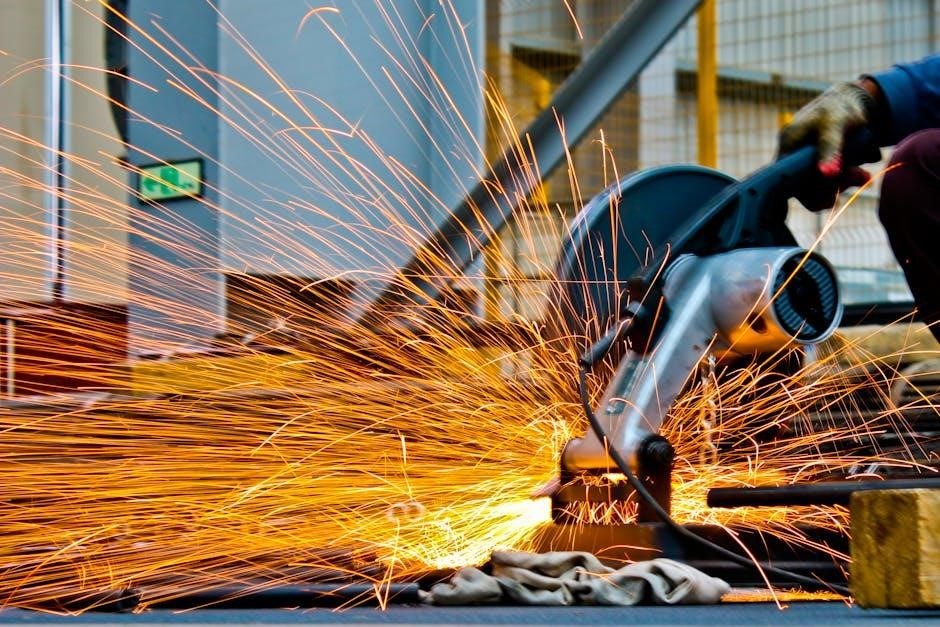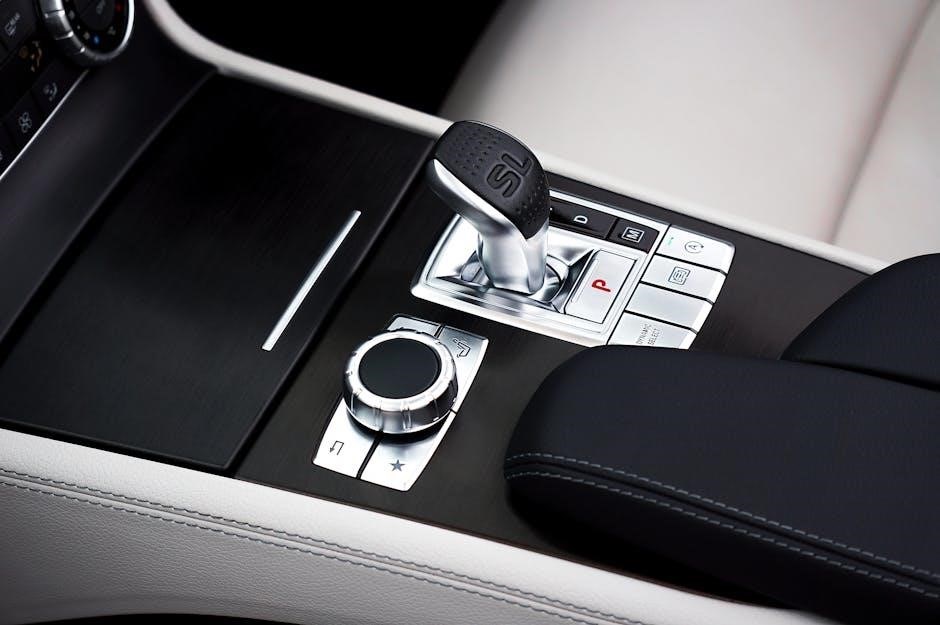The Ford Mustang offers a range of transmission options, including automatic and manual, catering to diverse driver preferences and performance needs. Both choices provide unique benefits, from smooth automatic shifting to the precise control of a manual gearbox, ensuring an exceptional driving experience tailored to individual lifestyles and driving habits.
Overview of Mustang Transmission Options
Ford Mustangs are available with both automatic and manual transmissions, catering to different driving preferences and needs. Automatic transmissions offer convenience and ease, especially in traffic-heavy conditions, appealing to a broader audience. Manual transmissions provide driver engagement and control, favored by enthusiasts. Modern automatics, like dual-clutch systems, rival manual performance, while maintaining efficiency. The choice between automatic and manual allows the Mustang to serve both everyday drivers and performance seekers, ensuring a versatile driving experience tailored to individual lifestyles and preferences.

Historical Perspective on Mustang Transmissions
Mustang transmissions have evolved from basic manual gearboxes to advanced automatics, reflecting industry trends and driver preferences for both performance and convenience over the years.

Early Mustang Models and Their Transmission Types
The first-generation Mustang, introduced in 1964, featured a 3-speed manual transmission as standard, with a 4-speed manual option for performance-oriented buyers. Automatic transmissions became available in 1965, offering convenience. Early models focused on simplicity and durability, with manual gearboxes dominating due to their lightweight and sporty appeal. Automatics gradually gained popularity for everyday driving comfort. These early transmission options laid the groundwork for future advancements, balancing performance and practicality to cater to a broad range of drivers and preferences.
Evolution of Transmissions in Modern Mustangs
Modern Mustangs feature advanced transmissions, blending performance and efficiency. Automatics now include high-speed, multi-gear systems like the 10-speed automatic, offering seamless shifting and improved fuel efficiency. Manual transmissions have evolved too, with features like rev-matching technology for smoother downshifts. Additionally, the availability of dual-clutch transmissions in performance models enhances acceleration and handling. These advancements reflect Ford’s commitment to innovation, ensuring Mustangs remain competitive in both power and technology, catering to diverse driver preferences while maintaining the iconic car’s legacy of performance and drivability.
Automatic vs. Manual: Key Differences
Automatic transmissions offer ease of use and smooth acceleration, ideal for daily driving, while manuals provide precise control and better fuel efficiency, appealing to driving enthusiasts.
Understanding Automatic Transmissions in Mustangs
Ford Mustangs offer advanced automatic transmissions, such as the 6-speed 6R80 and 10-speed options, designed for smooth shifting and responsive acceleration. These transmissions are paired with engines like the 5.0-liter Coyote, ensuring seamless power delivery. Modern automatics in Mustangs often feature paddle shifters for manual control, blending convenience with driver engagement. They are ideal for daily driving, providing ease of use in traffic and effortless cruising. Automatic transmissions also benefit from adaptive technology, optimizing gear changes based on driving conditions. While slightly heavier and less fuel-efficient than manuals, they offer a comfortable and stress-free driving experience, appealing to a broad range of buyers.
Manual Transmission Features and Benefits
Manual transmissions in Mustangs, such as the 6-speed Getrag MT82, deliver precise control and a direct driving experience. They offer better fuel economy and lower maintenance costs compared to automatics. Drivers enjoy the connection to the vehicle through clutch and gear operation, enhancing engagement. Manual transmissions are often lighter, contributing to improved power-to-weight ratios. They are favored by enthusiasts for their responsiveness and sporty feel. However, they require more skill and effort, especially in traffic. Mustang’s manual options cater to purists seeking a traditional, immersive driving experience, making them a preferred choice for track use and spirited driving sessions.
Performance Comparison
Automatic and manual Mustangs differ in acceleration and handling. Manuals often deliver faster shifting and better control, while automatics provide smooth, seamless power delivery, enhancing everyday drivability.
Acceleration and Handling in Automatic Mustangs
Automatic Mustangs deliver seamless acceleration and responsive handling, making them ideal for both daily driving and spirited adventures. The smooth torque delivery of automatic transmissions ensures quick off-the-line acceleration, while advanced systems like paddle shifters offer manual control when desired. This blend of convenience and performance makes automatic Mustangs a versatile choice, capable of delivering impressive lap times on the track while maintaining comfort on the road. The refined powertrain contributes to a dynamic driving experience, appealing to a wide range of enthusiasts.
Driving Experience with Manual Transmissions
Manual transmissions in Mustangs offer a direct, engaging driving experience, fostering a deeper connection between driver and vehicle. The precise control over gear shifts allows for tailored acceleration and responsiveness, particularly in spirited driving scenarios. Clutch operation and shift timing require driver input, creating a sense of mastery and satisfaction. Manual transmissions often appeal to enthusiasts who value the tactile feedback and emotional engagement of driving. While they may require more skill and attention, manual Mustangs deliver a purist driving experience that many find rewarding, especially on winding roads or at the track.
Fuel Efficiency and Maintenance

Mustang transmissions balance fuel efficiency and maintenance needs, with automatics offering improved mileage and manuals requiring more driver engagement and specific upkeep routines.
Fuel Economy Differences Between Automatic and Manual
Modern Mustang automatic transmissions often achieve similar or slightly better fuel economy than manuals due to advanced gear ratios and torque converter efficiency. Manuals, traditionally more fuel-efficient, now see a narrower gap. Automatics optimize shifting for economy, while manuals rely on driver skill. Real-world mileage varies, with manuals excelling in skilled hands but struggling in heavy traffic. Automatics provide consistent efficiency, making them a practical choice for daily driving. Both options balance performance and economy, catering to different priorities.
Maintenance Considerations for Each Transmission Type
Maintenance needs differ between automatic and manual Mustang transmissions. Automatics require regular fluid changes but are generally low-maintenance. However, repairs can be costly due to their complexity. Manuals need less frequent fluid changes but require clutch replacement over time, which can be expensive. Overall, automatics are easier to maintain daily, while manuals demand more driver involvement but offer longer component longevity with proper care.

Driver Preference and Trends
Modern Mustang buyers increasingly favor automatic transmissions for convenience, while enthusiasts often prefer manuals for driving engagement, reflecting shifting trends in driver preferences and lifestyle needs.
Popularity of Automatic vs. Manual in Modern Buyers
Modern Mustang buyers increasingly favor automatic transmissions for their convenience and ease of use, especially in urban settings. Automatics now dominate sales, appealing to a broader audience seeking stress-free driving experiences. However, manual transmissions remain popular among driving enthusiasts who value control and the tactile connection to the vehicle. This divide reflects shifting preferences, with automatics gaining traction for daily commuting and manuals cherished by performance purists. Ford continues to cater to both segments, ensuring the Mustang remains accessible to a wide range of drivers while preserving its legacy as a driver-focused machine.
Market Trends in Transmission Choices
Recent market trends show a shift toward automatic transmissions in the Mustang lineup, driven by increasing demand for convenience and ease of use. Automatics now account for a larger share of sales, particularly among younger buyers prioritizing daily practicality. However, manual transmissions remain sought after by driving enthusiasts and performance-oriented buyers. The 2024 Mustang, for instance, continues to offer both options, reflecting Ford’s strategy to cater to diverse preferences. This dual approach ensures the Mustang stays competitive, appealing to both mainstream and niche markets while maintaining its reputation as a versatile performance vehicle.
The Ford Mustang’s transmission options reflect a balance between tradition and innovation, offering both automatic and manual choices to suit different driver preferences. While automatic transmissions provide convenience and ease, manuals maintain a strong appeal for driving purists. Market trends show a growing preference for automatics, yet the manual remains a staple for enthusiasts. The Mustang’s continued success lies in its ability to adapt to changing driver needs while preserving its legacy as a performance icon. This dual approach ensures the Mustang remains a timeless choice, blending heritage with modern advancements to satisfy a wide range of drivers.
